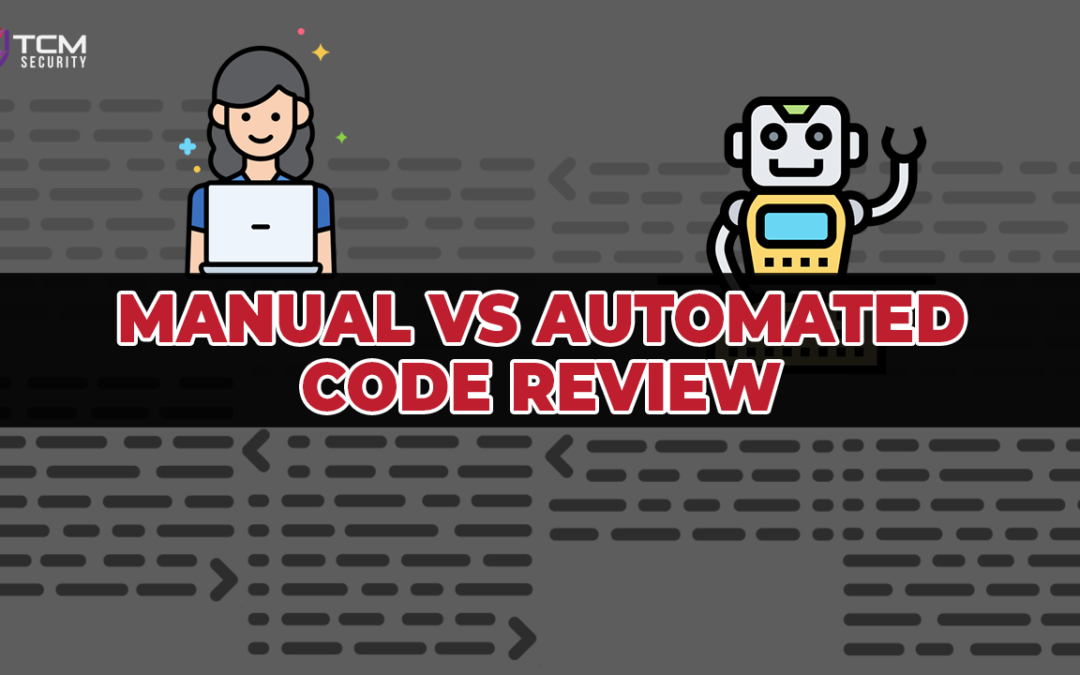Ensuring our code is secure is a critical part of protecting our applications and we should strive to build applications that are both secure by design and in practice. Many organizations use different approaches to achieve this. Today we’re going to take a look at the differences between SAST and manual code review and some of the pros and cons surrounding both approaches.
Manual Code Review
Manual code review is the process of inspecting source code line by line to identify potential security vulnerabilities, coding errors, and other issues. It sounds like a lot of effort but in reality, many agile development teams carry out code review on commit, and therefore we’re not evaluating large code-bases at any one time.
Pros of Manual Code Review
In-Depth Understanding: Manual code review allows the reviewer to gain a deep understanding of the code and its inner workings. This is particularly useful in identifying complex vulnerabilities that automated tools may not detect. Reviewers are also able to analyze the context and logic behind the code, which can lead to more accurate assessments of potential security risks.
Customized Solutions: When a vulnerability is identified during a manual code review, developers can work together to create tailored solutions that fit the specific needs of the application. This collaborative approach can result in more robust and effective fixes compared to those offered by automated tools.
Identification of Weaknesses: We don’t always find critical vulnerabilities when reading code, but there may be particular practices or coding patterns that could lead to a vulnerability in the future.
Training: Manual code review provides an excellent opportunity for developers to learn from one another, share knowledge about secure coding practices, and improve their skills. This ongoing education can lead to better overall code security and a stronger development team.
Cons of Manual Code Review
Time-Consuming: One of the biggest drawbacks of manual code review is the time it takes to review the code.
Subjectivity: Manual code review can be subjective, as it relies on the expertise and experience of the reviewer. This can lead to inconsistencies..
Scalability: Manual code review is not easily scalable, as it requires a significant amount of human resources. This can be a challenge for organizations with limited resources or rapidly growing codebases.
Automated Scanning
Static Application Security Testing (SAST) scanners are automated tools that analyze source code to identify potential security vulnerabilities. These tools use predefined rules and heuristics to scan for common security issues.
Pros of Automated Scanning
Speed and Efficiency: SAST scanners can quickly scan large volumes of code, making them much faster and more efficient than manual code reviews. For organizations with large codebases or tight deadlines this could be a deciding factor.
Consistency: Automated tools like SAST scanners are designed to be consistent in their results. This means that, unlike manual code reviews, they do not suffer from subjectivity or inconsistencies based on the reviewer’s knowledge or experience.
Coverage: SAST scanners can analyze every line of code in an application, this can also extend to third party libraries and dependencies that would usually be out of scope for manual code review.
Cons of Automated Scanning
False Positives: Automated tools like SAST scanners are prone to producing false positives, which can lead to wasted time and effort in fixing non-existent vulnerabilities.
Lack of Context: SAST scanners are only able to analyze the code itself and cannot take into account the context or logic behind it. This means that they may miss complex vulnerabilities that require an understanding of the application’s inner workings.
Limited Scope: SAST scanners can only detect vulnerabilities that are already known to the tool. This means that they may miss new or unknown vulnerabilities that have not been added to the tool’s database.
Conclusion
While manual code review allows for a deep understanding of the code and the ability to create tailored solutions, it can be time-consuming, subjective, and not easily scalable. On the other hand, SAST scanners are faster, more consistent, and have a more comprehensive scope, but they may produce false positives, lack context, and have a limited scope.
Ultimately, the best approach to code security is a combination of both manual and automated tools, leveraging the strengths of each to create a more robust and secure application. If this is impossible for your organization due to budget, time, other constraints then consider which approach would yield the highest return on investment.

About the Author: Alex Olsen
Alex is a Web Application Security specialist with experience working across multiple sectors, from single-developer applications all the way up to enterprise web apps with tens of millions of users. He enjoys building applications almost as much as breaking them and has spent many years supporting the shift-left movement by teaching developers, infrastructure engineers, architects, and anyone who would listen about cybersecurity. He created many of the web hacking courses in TCM Security Academy, as well as the PWPA and PWPP certifications.
Alex holds a Master’s Degree in Computing, as well as the PNPT, CEH, and OSCP certifications.
About TCM Security
TCM Security is a veteran-owned, cybersecurity services and education company founded in Charlotte, NC. Our services division has the mission of protecting people, sensitive data, and systems. With decades of combined experience, thousands of hours of practice, and core values from our time in service, we use our skill set to secure your environment. The TCM Security Academy is an educational platform dedicated to providing affordable, top-notch cybersecurity training to our individual students and corporate clients including both self-paced and instructor-led online courses as well as custom training solutions. We also provide several vendor-agnostic, practical hands-on certification exams to ensure proven job-ready skills to prospective employers.
Pentest Services: https://tcmdev.tcmsecurity.com/our-services/
Follow Us: Blog | LinkedIn | YouTube | Twitter | Facebook | Instagram
Contact Us: sales@tcm-sec.com
See How We Can Secure Your Assets
Let’s talk about how TCM Security can solve your cybersecurity needs. Give us a call, send us an e-mail, or fill out the contact form below to get started.


